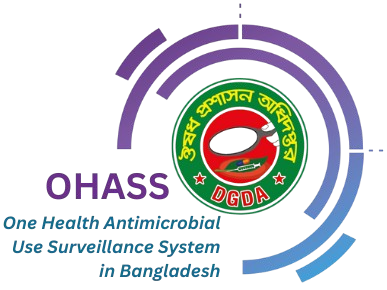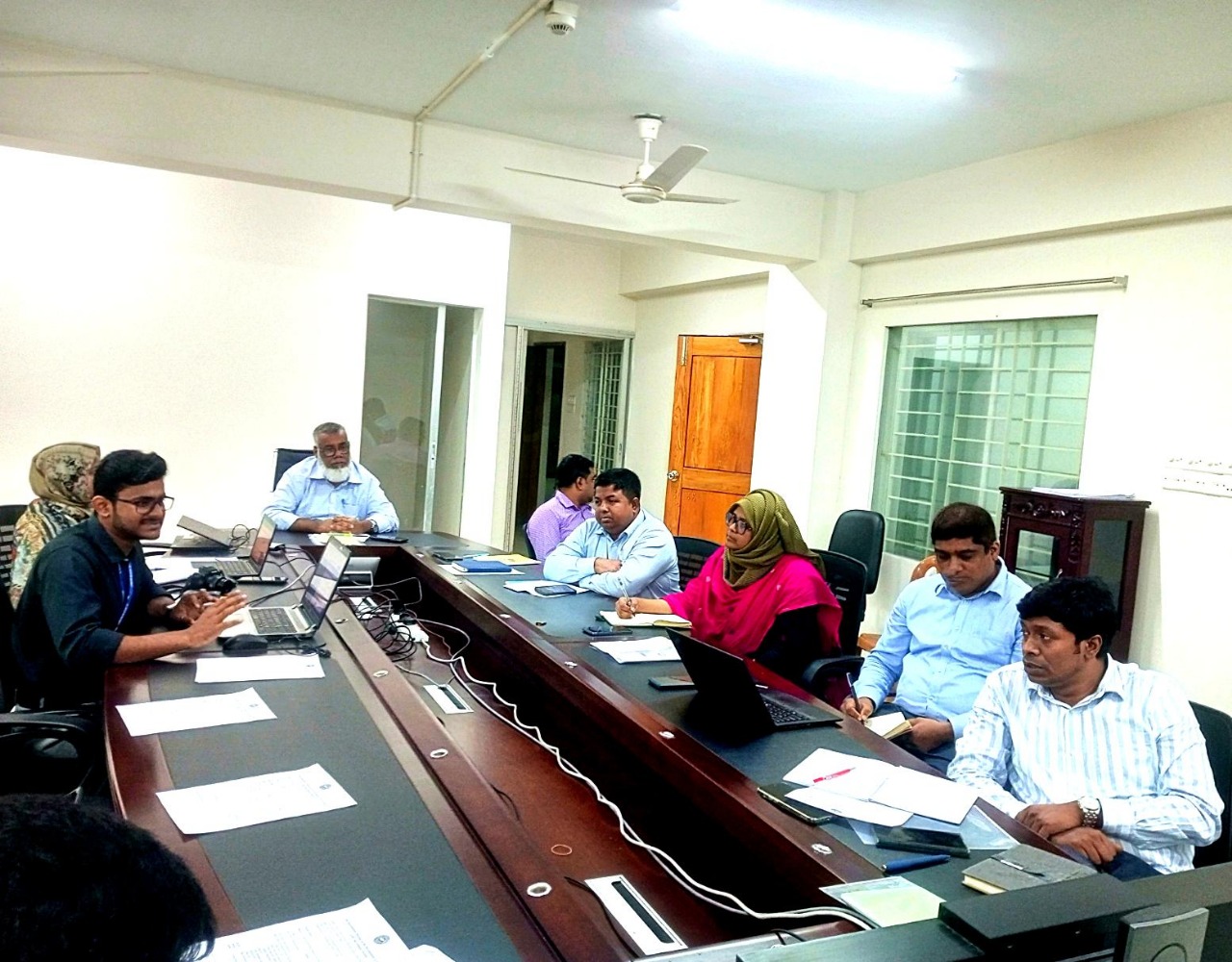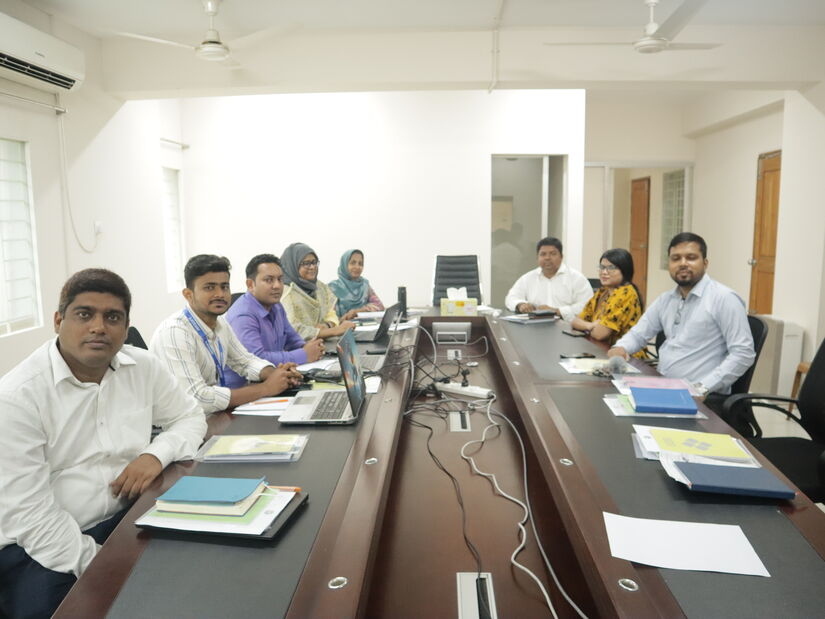| 1 |
DGDA |
Human Medicine Manufacturer |
|
Visit
|
| 2 |
Al-Madina Pharmaceuticals Limited |
Human Medicine Manufacturer |
|
Visit
|
| 3 |
Apex Pharma Ltd. |
Human Medicine Manufacturer |
|
Visit
|
| 4 |
Beximco Pharmaceuticals Limited |
Human Medicine Manufacturer |
- Beximco Pharmaceuticals Limited Tongi, Gazipur
- Beximco Pharmaceuticals Limited ,Tongi , Gazipur
- Beximco Pharmaceuticals Limited, Tongi, Gazipur
|
Visit
|
| 5 |
Drug International Ltd |
Human Medicine Manufacturer |
- 252, Tongi Industrial Area, Tongi, Gazipur, Bangladesh.
- 13A & 14A, Tongi I/A, Squibb Road, Tongi, Gazipur, Bangladesh
- 31/1, Satrong Road, Gopalpur, Tongi Industrial Area, Gazipur, Bangladesh
|
Visit
|
| 6 |
Eskayef Pharmaceuticals Limited (SK+F) |
Human Medicine Manufacturer |
- Tongi, Gazipur
- Rupganj, Narayanganj
- Mirpur, Dhaka
|
Visit
|
| 7 |
Apex Pharma Limited |
Human Medicine Manufacturer |
- Shafipur, Kaliakair, Gazipur, Bangladesh.
|
Visit
|
| 8 |
Demo |
Human Medicine Manufacturer |
|
Visit
|
| 9 |
Al-Madina Pharma |
Human Medicine Manufacturer |
|
Visit
|
| 10 |
Chemist laboratories ltd |
Human Medicine Manufacturer |
|
Visit
|
| 11 |
Biogen Pharmaceuticals Ltd. |
Human Medicine Manufacturer |
|
Visit
|
| 12 |
Jenphar Bangladesh Limited |
Human Medicine Manufacturer |
- Jenphar Bangladesh Limited
|
Visit
|
| 13 |
ABCD |
Human Medicine Manufacturer |
|
Visit
|
| 14 |
Navana Pharmaceuticals PLC |
Human Medicine Manufacturer |
- Plot-1071, 1073 Rupshi, Rupganj, Narayanganj, Bangladesh
|
Visit
|
| 15 |
General pharmaceutical Ltd. |
Human Medicine Manufacturer |
- Karol Surichala Mouchak Kaliakair Gazipur.
|
Visit
|
| 16 |
Popular Pharmaceuticals PLC. |
Human Medicine Manufacturer |
- 164, Tongi Industrial Area; Monnunagar PS; Gazipur-1710; Bangladesh
|
Visit
|
| 17 |
KUMUDINI Pharma Ltd. |
Human Medicine Manufacturer |
|
Visit
|
| 18 |
Orion Pharma Ltd. |
Human Medicine Manufacturer |
|
Visit
|
| 19 |
Nuvista Pharma PLC. |
Human Medicine Manufacturer |
- 48, Tongi Industrial Area
|
Visit
|
| 20 |
Advanced Chemical Industries PLC |
Human Medicine Manufacturer |
- 07 Hajeeganj, Godnyl , Narayanganj
- Sonargaon Museum Gate-1 Road, Treepordi, Sonargaon, Narayanganj 1440, Bangladesh
- Sonargaon Museum Gate no. 2 Road, Treepordi, Sonargaon, Narayanganj, Bangladesh
|
Visit
|
| 21 |
Pharmasia Limited |
Human Medicine Manufacturer |
|
Visit
|
| 22 |
NOVATEK PHARMACEUTICALS LTD. |
Human Medicine Manufacturer |
- GILARCHALA, 7 KEWA MOUZA, SREEPUR, GAZIPUR, BANGLADESH
|
Visit
|
| 23 |
Naafco Pharma PLC |
Human Medicine Manufacturer |
|
Visit
|
| 24 |
M/S The IBN SINA Pharmaceutical Industry PLC. |
Human Medicine Manufacturer |
- Shafipur, Kaliakoir, Gazipur
|
Visit
|
| 25 |
Delta Pharma Limited |
Human Medicine Manufacturer |
- Tarakandi, Pakundia, Kishoreganj
|
Visit
|
| 26 |
AZ |
Human Medicine Manufacturer |
|
Visit
|
| 27 |
Ramim Pharma |
Human Medicine Manufacturer |
|
Visit
|
| 28 |
C2C Pharma Ltd. |
Human Medicine Manufacturer |
|
Visit
|
| 29 |
Silva Pharmaceuticals Limited |
Human Medicine Manufacturer |
|
Visit
|
| 30 |
The ACME laboratories limited |
Human Medicine Manufacturer |
|
Visit
|
| 31 |
National Drug Company Limited |
Human Medicine Manufacturer |
- Bangalpara, Dhamrai, Dhaka.
|
Visit
|
| 32 |
Square Pharmaceuticals PLC |
Human Medicine Manufacturer |
- Kaliakoir, Gazipur
- Pabna, Salgaria
- Hemayetpur, Pabna, SLL
|
Visit
|
| 33 |
Synovia Pharma PLC. |
Human Medicine Manufacturer |
|
Visit
|
| 34 |
SMC Enterprise Ltd |
Human Medicine Manufacturer |
|
Visit
|
| 35 |
Veritas Pharmaceuticals Ltd. |
Human Medicine Manufacturer |
|
Visit
|
| 36 |
Union Pharmaceuticals Limited |
Human Medicine Manufacturer |
- Sadapur Puranbari, Savar, Dhaka-1340,Bangladesh
|
Visit
|
| 37 |
SOMATEC PHARMCEUTICALS LTD. |
Human Medicine Manufacturer |
|
Visit
|
| 38 |
Pacific Pharmaceuticals Limited |
Human Medicine Manufacturer |
- Pacific pharmaceuticals Limited
|
Visit
|
| 39 |
Jayson Pharmaceuticals Limited |
Human Medicine Manufacturer |
|
Visit
|
| 40 |
UniMed UniHealth Pharmaceuticals Ltd. |
Human Medicine Manufacturer |
- B.K. Bari, Mirzapur, Gazipur Sadar, Gazipur.
|
Visit
|
| 41 |
Team Pharmaceuticals Ltd. |
Human Medicine Manufacturer |
- Plot no. B75-B80, BSCIC I/E, Sopura, Rajshahi
|
Visit
|
| 42 |
Indo Bangla pharmaceuticals ltd |
Human Medicine Manufacturer |
|
Visit
|
| 43 |
Amico Labrotary |
Human Medicine Manufacturer |
|
Visit
|
| 44 |
Beacon Cephalosporin Limited |
Human Medicine Manufacturer |
- Kathali, Bhaluka, Mymensingh, Bangladesh
|
Visit
|
| 45 |
Essential Drugs Company Limited |
Human Medicine Manufacturer |
- Tejgaon, Dhaka
- Bogura
- Gopalganj
|
Visit
|
| 46 |
Aristopharma Ltd. |
Human Medicine Manufacturer |
- Factory (Shampur): Plot No # 16,17,19,20,21 & 22 Road No # 11 & 12 Shampur, Kadamtali I/A, Dhaka – 1204
- Factory (Gachha): Gachha, Gazipur Sadar Gazipur
|
Visit
|
| 47 |
Everest Pharmaceuticals Limited |
Human Medicine Manufacturer |
- BSCIC Industrials Area, Kanchpur, Sonargaon, Narayanganj
|
Visit
|
| 48 |
Benham Pharmaceuticals Ltd |
Human Medicine Manufacturer |
- Plot No: 01, Aicha Nwaddah, Rajashon Road, Savar, Dhaka
|
Visit
|
| 49 |
Incepta Pharmaceuticals Ltd. |
Human Medicine Manufacturer |
- M/s. Incepta Pharmaceuticals Ltd. Dewan Idris Road, Bara Rangamatia, Zirabo, Ashulia, Savar, Dhaka-1341
- M/s. Incepta Pharmaceuticals Ltd., Krishnapura, Sahabelishor, Dhamrai, Dhaka
|
Visit
|
| 50 |
Healthcare Pharmaceuticals Ltd |
Human Medicine Manufacturer |
- Healthcare Pharmaceuticals Ltd
|
Visit
|
| 51 |
JBRSOFT Ltdd. |
Human Medicine Manufacturer |
|
Visit
|
| 52 |
NIPRO JMI Pharma Limited |
Human Medicine Manufacturer |
- Rajendrapur, Chauddagram, Cumilla, Bangladesh
|
Visit
|
| 53 |
One Pharma Ltd. |
Human Medicine Manufacturer |
- BSCIC Industrial Area, Fulbari, Bogura
|
Visit
|
| 54 |
Rangs Pharmaceuticals Ltd. |
Human Medicine Manufacturer |
- Rangs Pharmaceuticals Ltd. 133/5, Boro Bhabanipur, Kashimpur, Gazipur, Bangladesh.
|
Visit
|
| 55 |
Nevian Lifescience PLC |
Human Medicine Manufacturer |
|
Visit
|
| 56 |
Radiant Pharmaceuticals Limited |
Human Medicine Manufacturer |
- Radiant Pharmaceuticals Limited
|
Visit
|
| 57 |
Pharmacil Limited |
Human Medicine Manufacturer |
|
Visit
|
| 58 |
Biopharma Limited |
Human Medicine Manufacturer |
|
Visit
|
| 59 |
Renata PLC |
Human Medicine Manufacturer |
- Rajendrapur, Gazipur
- Mirpur, Dhaka
|
Visit
|
| 60 |
Desh Pharmaceuticals Ltd. |
Human Medicine Manufacturer |
|
Visit
|
| 61 |
Opsonin Pharma Ltd. |
Human Medicine Manufacturer |
|
Visit
|
| 62 |
Nipa Pharmaceuticals Ltd. |
Human Medicine Manufacturer |
- I/5, Rupnagar I/A, Section-02, Mirpur-1216
|
Visit
|
| 63 |
Medicon Pharmaceuticals Limited |
Human Medicine Manufacturer |
- Medicon Pharmaceuticals Limited
|
Visit
|
| 64 |
Guardian Healthcare Ltd. |
Human Medicine Manufacturer |
- Amtola, Zirobo, Aushulia, Savar, Dhaka
|
Visit
|
| 65 |
Mst pharma and healthcare limited |
Human Medicine Manufacturer |
|
Visit
|
| 66 |
REPHCO Pharmaceuticals Ltd. |
Human Medicine Manufacturer |
|
Visit
|
| 67 |
Zenith Pharma |
Human Medicine Manufacturer |
|
Visit
|
| 68 |
M/S Ziska Pharmaceuticals Ltd. |
Human Medicine Manufacturer |
- Karol Surichala, Kaliakair. Gazipur-1751, Bangladesh
|
Visit
|
| 69 |
The White Horse Pharmaceuticals Ltd. |
Human Medicine Manufacturer |
|
Visit
|
| 70 |
Bristol Pharma Limited |
Human Medicine Manufacturer |
|
Visit
|
| 71 |
DBL PHARMACEUTICALS LIMITED |
Human Medicine Manufacturer |
- Surabari, Kashimpur, Gazipur-1700, Bangladesh
|
Visit
|
| 72 |
Getwell limited |
Human Medicine Manufacturer |
- Olipur, shajibazar, Habiganj
|
Visit
|
| 73 |
Arges Life Science Limited |
Human Medicine Manufacturer |
|
Visit
|
| 74 |
Silco Pharmaceutical ltd |
Human Medicine Manufacturer |
|
Visit
|
| 75 |
Techno Drugs Ltd. |
Human Medicine Manufacturer |
- BK Bari, Mirzapur, Gazipur
- Satirpara, Narsingdi
|
Visit
|
| 76 |
Globe pharmaceuticals Ltd. |
Human Medicine Manufacturer |
|
Visit
|
| 77 |
EURO Pharma Ltd. |
Human Medicine Manufacturer |
- 385 West Jurain, Khandaker Road, Dhaka-1204
|
Visit
|
| 78 |
Concord Pharmaceuticals Ltd. |
Human Medicine Manufacturer |
|
Visit
|

.png)




